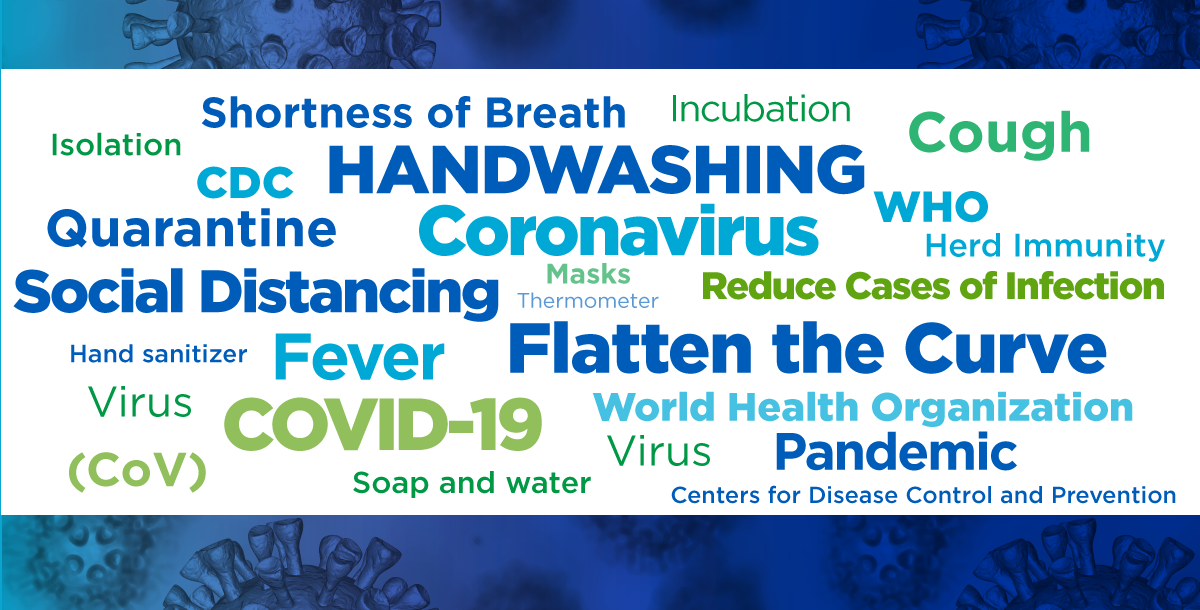Updates about COVID-19 are coming out on a daily basis. There are also many new buzzwords people are using when discussing this new virus.
We’ve created a list of the COVID-19 terms you need to know. Hopefully they’ll help you better understand the conversations swirling around you. Let’s get started with the main subject.
Coronavirus
Coronaviruses (CoV) are a large family of viruses, according to the World Health Organization (WHO). They can cause illnesses ranging from the common cold to more severe diseases including Middle East respiratory syndrome (MERS-CoV) and severe acute respiratory syndrome (SARS-CoV). The term “coronavirus” covers more than just one type of virus, but it includes the specific strain we are currently facing.
COVID-19
COVID-19 refers to the specific virus that is currently sweeping our world. The term literally means “coronavirus disease 2019.” According to the World Health Organization, the current coronavirus disease, COVID-19, is a completely new strain of coronavirus that we haven’t seen in humans previously.
Social Distancing
Social distancing means remaining out of group settings and avoiding mass gatherings. According to the Centers for Disease Control and Prevention (CDC), maintaining a distance of at least six feet from others is critical as well. Social distancing is one of the best ways we can prevent the spread of COVID-19 to others.
Flatten the Curve
When it comes to diseases, the “curve” refers to the projected number of new infections over a certain time period. The CDC is currently urging people to practice social distancing in order to reduce the number of people who get sick with COVID-19 at once. Doing this will help ensure health care systems have the resources they need to care for sick individuals who need hospitalization.
Therefore, “flattening the curve” protects health care systems from being over capacity and allows them to treat everyone who needs their care.
Self-quarantine
Quarantine means to separate and restrict the movement of people who were exposed to a contagious disease to see if they become sick. According to the CDC, you should self-quarantine for 14 days if you have been exposed to COVID-19 or interacted with someone who has the virus. This helps you monitor your health and prevents other individuals from getting sick if you do have the virus.
Isolation
When you separate sick people with a contagious disease from people who are not sick, you are putting them under isolation. Are you presenting any COVID-19 symptoms? If you are, please isolate yourself immediately. This means staying at home and not leaving for any reason. If you live with others, pick a specific room to live in while you are sick. Also, be sure to avoid direct contact with others both inside and outside your home.
Incubation Period
The time between contracting a virus and when you begin experiencing symptoms is the incubation period. The incubation period for COVID-19 is two to 14 days. During the COVID-19 incubation period, the virus can still spread to others even if the person does not have symptoms. This is a main reason why taking steps to social distance and self-quarantine are critical at this time.
Community Spread
The CDC says community spread means when individuals in a certain area or community are being infected with a virus. This includes people who are not sure how or when they became infected with the virus.
Herd Immunity
Also known as “group immunity,” herd immunity occurs when enough people are immune to an infectious disease, making the further spread of the virus unlikely. Herd immunity can happen from vaccination or from enough people developing immunity after contracting the illness.
Pandemic
A pandemic is when the case numbers of a disease suddenly increase and the disease spreads to several countries or continents throughout the world. The World Health Organization announced COVID-19 is a pandemic on March 11, 2020.
National Emergency
A state of emergency is declared when there is a danger or threat of danger to a nation from either a foreign or domestic issue. It is usually done by a governmental authority.
President Trump officially declared a national emergency concerning the COVID-19 outbreak on March 1, 2020.
Is there a COVID-19 term you still need us to define? Comment below and let us know the term or phrase you need help with.
Stay updated on what Bon Secours is doing related to COVID-19.




